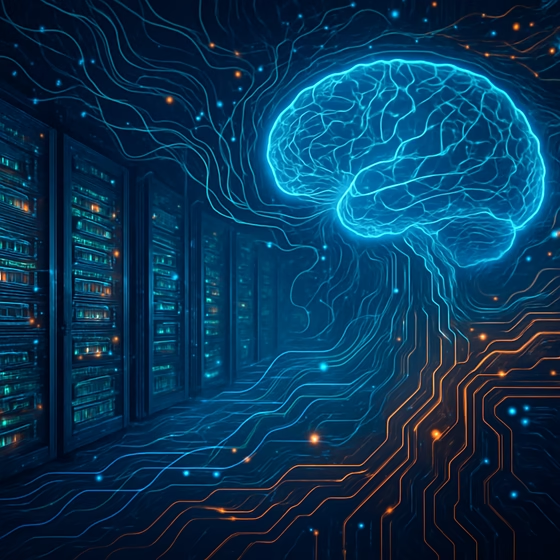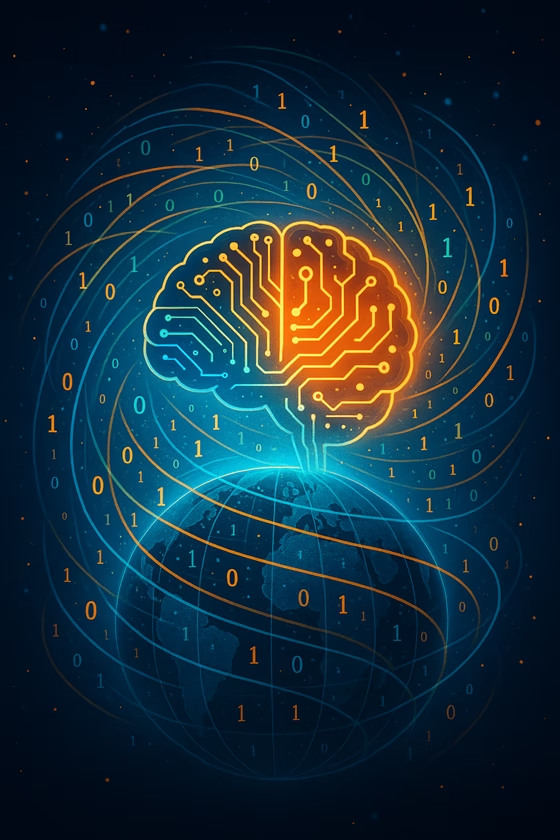GPT‑5 Launch: Inside the New AI Era
Artificial intelligence is no longer just the subject of science fiction—it’s the force behind search engines, smart assistants and the tools many of us use every day. In early August 2025, OpenAI announced its next‑generation language model, GPT‑5, releasing it to more than 700 million ChatGPT users [1]. While this upgrade may sound technical, its implications ripple far beyond the research labs and into our homes, classrooms and offices.
A Journey from GPT‑3 to GPT‑5
The road to the latest model has been remarkably short yet revolutionary. In just a few years, generative models evolved from an impressive text generation to an ability to understand images, code and complex queries. It promises expert‑level answers and more robust problem‑solving thanks to enterprise‑grade features and test‑time compute, which allocates more processing power for difficult problems[2]. Although early reviewers noted that improvements are subtler compared with earlier jumps, the model offers greater reliability and customization options for businesses and developers.

OpenAI’s rollout also coincides with a surge in global AI investment. Major technology companies plan to spend nearly $400 billion building data centers and acquiring hardware for generative AI[1]. The stakes are so high that top AI researchers now command signing bonuses nearing $100 million[1]. For many startups and established firms, the latest model is a platform for innovation—but it’s also part of an intensifying arms race.
What’s New in GPT‑5?
OpenAI designed GPT‑5 to be more flexible and context‑aware than its predecessors. Key upgrades include:
- Longer contextual memory – GPT‑5 can process larger documents and maintain context over long conversations, making it useful for legal briefs, research and enterprise knowledge bases.
- Test‑time compute – The model dynamically allocates more processing power to harder questions, improving accuracy and reasoning[2].
- Enterprise functionality – Businesses can fine‑tune GPT‑5 with proprietary data, integrate it into internal systems and enforce compliance rules, making it suitable for sensitive industries such as healthcare and finance.
- Improved multilingual support – GPT‑5 offers broader language coverage and better translation across dialects, connecting global audiences.
Behind the scenes, this new model relies on even larger training datasets and more efficient architectures. These improvements require enormous computing resources—hence the push for new data centers and energy‑efficient hardware.

The AI Investment Boom
The release of the latest model underscores a broader economic trend. According to Reuters, big tech players are pouring hundreds of billions of dollars into AI infrastructure[1]. These investments span from specialized chips and cooling systems to hiring AI researchers at unprecedented salaries. Venture capital firms are also betting on startups building specialized applications on top of this new model. This surge has created intense competition for talent and resources, raising questions about sustainability and equitable access.
Valuation and Stock Sales
OpenAI is reportedly considering allowing employees to sell shares at a valuation of about $500 billion, reflecting investor confidence in the company’s future[1]. Such sky‑high figures highlight how central generative AI has become to modern economies—and how volatile the market can be if expectations aren’t met.
Real‑World Story: A Café Owner Embraces GPT‑5
Imagine Marie, the owner of a small café in Gatineau. She’s been using an earlier version to draft social‑media posts and answer customer queries, but the results sometimes feel robotic. With the latest model’s fine‑tuning capabilities, Marie trains a model on her menu, customer feedback and seasonal specials. The AI now writes friendly newsletters, suggests creative latte flavors based on past sales and even generates promotional codes for regulars. When a customer asks about gluten‑free options, the AI not only lists current offerings but suggests pairing them with a house‑roasted tea. Marie’s story illustrates how powerful tools become when placed in everyday hands.
Opportunities and Challenges
While GPT‑5 opens exciting possibilities, it also raises concerns:
- Ethical use – As models become more persuasive, there’s a risk of misinformation, plagiarism or biased outputs. Companies must establish ethical guidelines and transparency.
- Energy consumption – Training and running large models consumes vast amounts of electricity. Sustainable practices, including renewable energy sources, are crucial.
- Accessibility – Smaller firms and developing countries may struggle to afford access. Open‑source alternatives and tiered pricing could help democratize benefits.
On the positive side, this new model may revolutionize education, healthcare and creative industries by automating mundane tasks and enabling human experts to focus on higher‑level thinking.
The Future of Human–AI Collaboration

As generative AI becomes woven into the fabric of society, collaboration—not replacement—should be the goal. Models like this new language model excel at pattern recognition and language generation, but humans provide context, empathy and ethical judgment. Schools can teach students how to critically evaluate AI‑generated information. Governments can craft regulations that encourage innovation while safeguarding privacy and equity. Meanwhile, researchers are exploring hybrid systems that combine symbolic reasoning with neural networks to reduce hallucinations and increase reliability.
FAQs About GPT‑5
What is GPT‑5?
This model is OpenAI’s latest large language model. It generates human‑like text based on extensive training data and offers enhanced contextual understanding, enterprise features and dynamic resource allocation.
Is GPT‑5 available to everyone?
Yes. OpenAI has made GPT‑5 accessible through ChatGPT and enterprise APIs, reaching more than 700 million users worldwide[1]. Some advanced features require a paid plan or enterprise agreement.
How does GPT‑5 differ from GPT‑4?
The latest model can handle longer contexts, allocate more computing power to complex questions and be fine‑tuned with proprietary data. Although the leap isn’t as dramatic as earlier generations, it offers higher reliability and customization[2].
Conclusion: Embrace the New Era Responsibly
The launch of this new model marks another milestone in the rapid evolution of artificial intelligence. Whether you’re a café owner, developer or student, the model’s capabilities can enhance creativity and efficiency. At the same time, the AI boom demands careful reflection on ethics, accessibility and sustainability. To learn more about nurturing your own cognitive abilities, check out our related post on SuperAgers and the secrets of lasting memory. For official information, visit OpenAI’s website.
Call to Action: Experiment with GPT‑5 responsibly—try automating a simple task or brainstorming ideas with the model, and share your experiences in the comments below. Subscribe to our newsletter for more insights on emerging technologies.
Call to Action: Experiment with this new model responsibly—try automating a simple task or brainstorming ideas with the model, and share your experiences in the comments below. Subscribe to our newsletter for more insights on emerging technologies.
[1] [2] OpenAI launches GPT-5 as the AI industry seeks a return on investment | Reuters
